Company Law: Australian Incorporation, Liability, and Legal Actions
VerifiedAdded on 2020/04/07
|10
|2497
|40
Report
AI Summary
This report delves into key aspects of Australian company law, examining the process of company incorporation, the implications of corporate liability, and the legal actions that can be taken against companies. It begins by outlining the steps required for Richard and his son to establish a company, referencing relevant legislation and case law such as Salomon v A Salomon and Co Ltd [1897] to illustrate the concept of a separate legal entity. The report then analyzes whether Terry can take action against CMA, CM, or Lazarus Pty Ltd, exploring the concept of piercing the corporate veil and the circumstances under which a parent company can be held liable for the actions of its subsidiaries. It discusses scenarios involving tortious liability, implied agency, and sham or façade companies, supported by cases like Stone and Knight v Birmingham Corporation (1939) and CSR Ltd v Wren (1997). Furthermore, the report addresses the possibility of statutory derivative actions, referencing section 236 and 237 of the Corporations Act 2001, and concludes with recommendations for Terry's legal options.
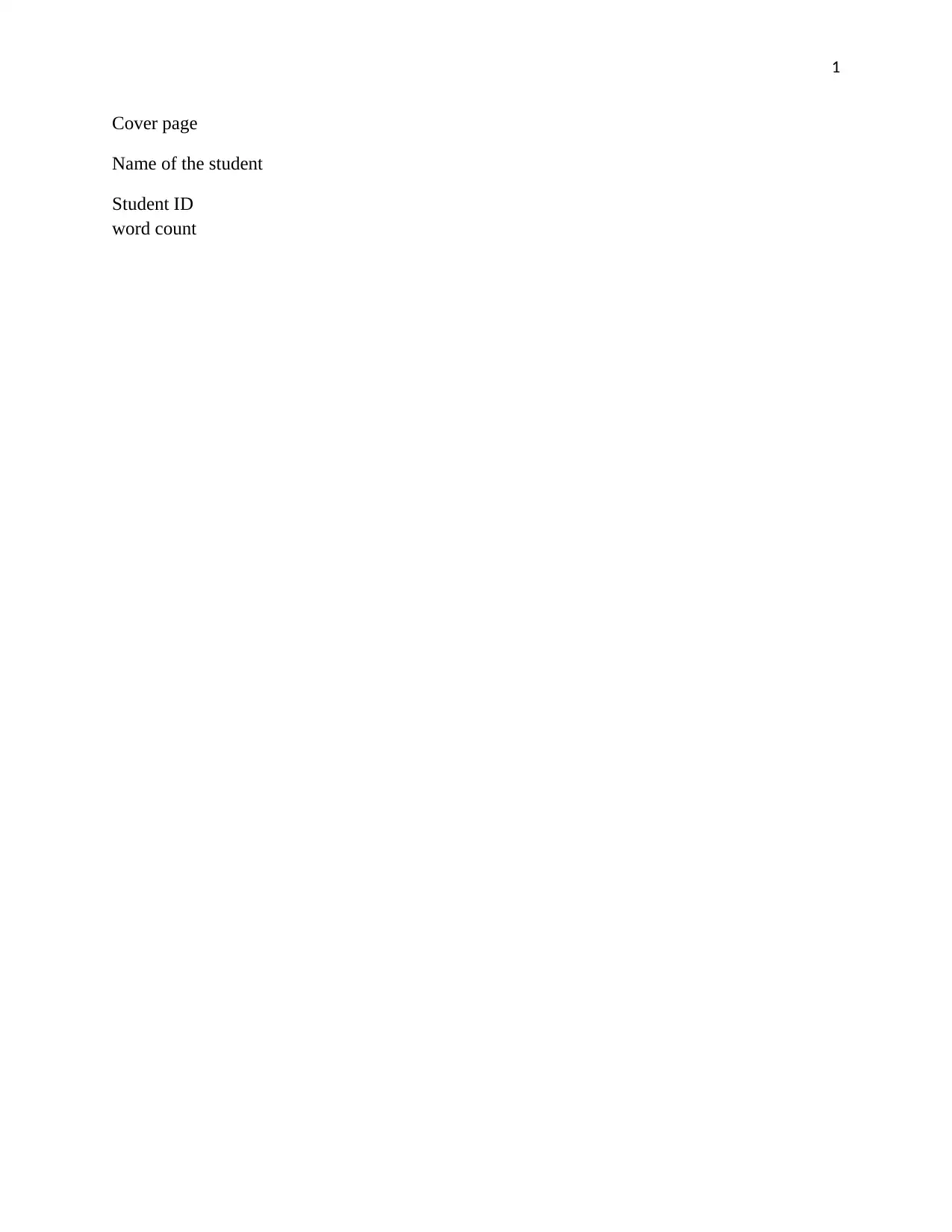
1
Cover page
Name of the student
Student ID
word count
Cover page
Name of the student
Student ID
word count
Paraphrase This Document
Need a fresh take? Get an instant paraphrase of this document with our AI Paraphraser
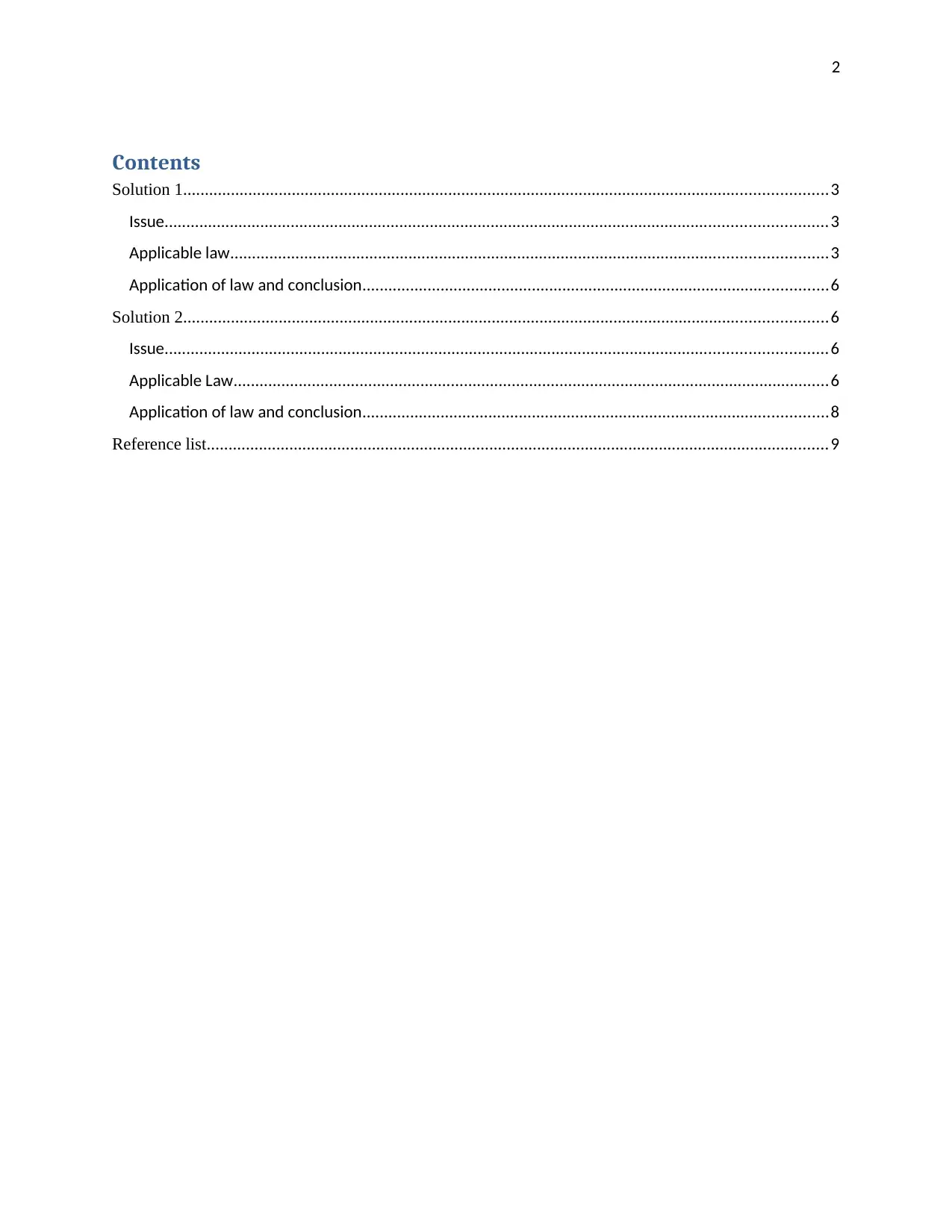
2
Contents
Solution 1....................................................................................................................................................3
Issue........................................................................................................................................................3
Applicable law.........................................................................................................................................3
Application of law and conclusion...........................................................................................................6
Solution 2....................................................................................................................................................6
Issue........................................................................................................................................................6
Applicable Law.........................................................................................................................................6
Application of law and conclusion...........................................................................................................8
Reference list...............................................................................................................................................9
Contents
Solution 1....................................................................................................................................................3
Issue........................................................................................................................................................3
Applicable law.........................................................................................................................................3
Application of law and conclusion...........................................................................................................6
Solution 2....................................................................................................................................................6
Issue........................................................................................................................................................6
Applicable Law.........................................................................................................................................6
Application of law and conclusion...........................................................................................................8
Reference list...............................................................................................................................................9
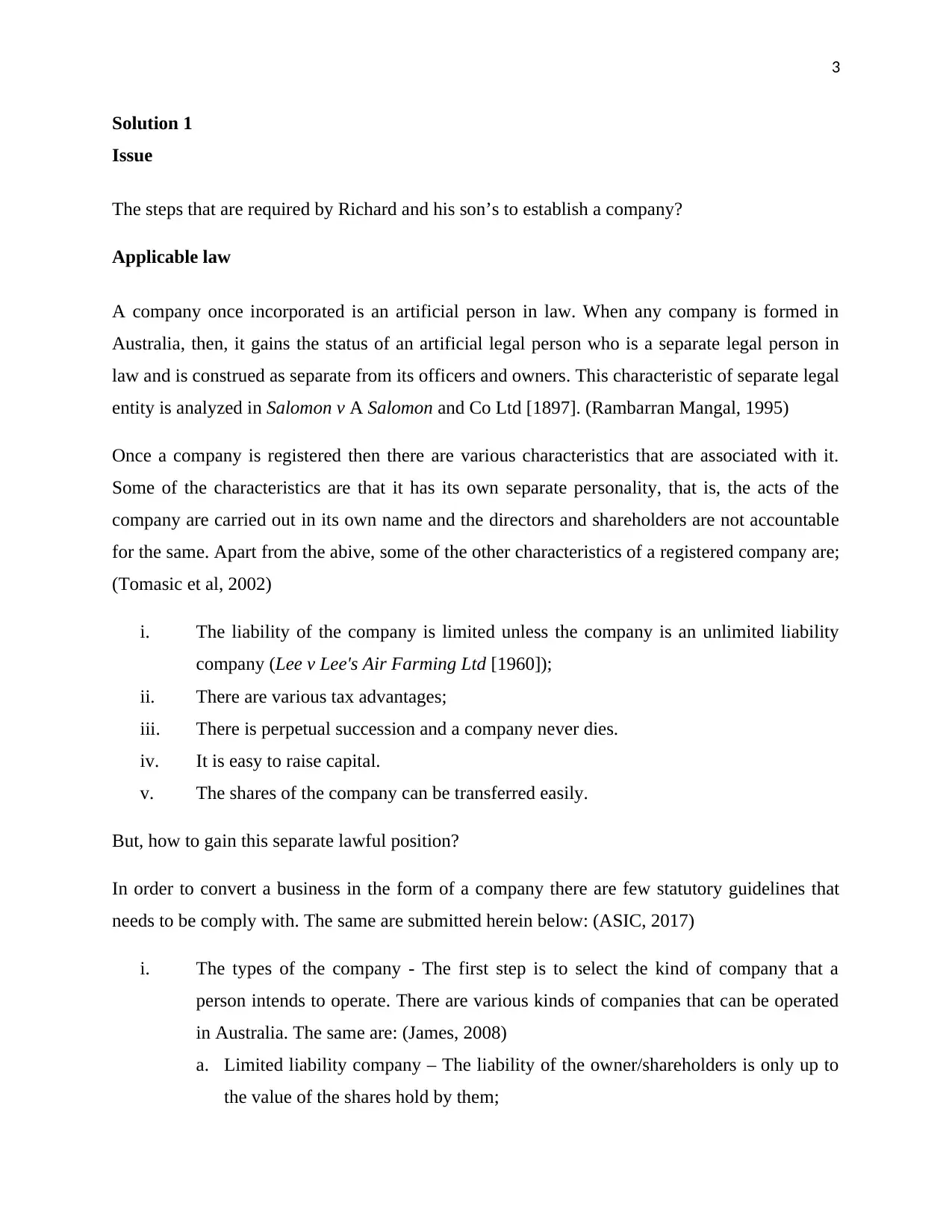
3
Solution 1
Issue
The steps that are required by Richard and his son’s to establish a company?
Applicable law
A company once incorporated is an artificial person in law. When any company is formed in
Australia, then, it gains the status of an artificial legal person who is a separate legal person in
law and is construed as separate from its officers and owners. This characteristic of separate legal
entity is analyzed in Salomon v A Salomon and Co Ltd [1897]. (Rambarran Mangal, 1995)
Once a company is registered then there are various characteristics that are associated with it.
Some of the characteristics are that it has its own separate personality, that is, the acts of the
company are carried out in its own name and the directors and shareholders are not accountable
for the same. Apart from the abive, some of the other characteristics of a registered company are;
(Tomasic et al, 2002)
i. The liability of the company is limited unless the company is an unlimited liability
company (Lee v Lee's Air Farming Ltd [1960]);
ii. There are various tax advantages;
iii. There is perpetual succession and a company never dies.
iv. It is easy to raise capital.
v. The shares of the company can be transferred easily.
But, how to gain this separate lawful position?
In order to convert a business in the form of a company there are few statutory guidelines that
needs to be comply with. The same are submitted herein below: (ASIC, 2017)
i. The types of the company - The first step is to select the kind of company that a
person intends to operate. There are various kinds of companies that can be operated
in Australia. The same are: (James, 2008)
a. Limited liability company – The liability of the owner/shareholders is only up to
the value of the shares hold by them;
Solution 1
Issue
The steps that are required by Richard and his son’s to establish a company?
Applicable law
A company once incorporated is an artificial person in law. When any company is formed in
Australia, then, it gains the status of an artificial legal person who is a separate legal person in
law and is construed as separate from its officers and owners. This characteristic of separate legal
entity is analyzed in Salomon v A Salomon and Co Ltd [1897]. (Rambarran Mangal, 1995)
Once a company is registered then there are various characteristics that are associated with it.
Some of the characteristics are that it has its own separate personality, that is, the acts of the
company are carried out in its own name and the directors and shareholders are not accountable
for the same. Apart from the abive, some of the other characteristics of a registered company are;
(Tomasic et al, 2002)
i. The liability of the company is limited unless the company is an unlimited liability
company (Lee v Lee's Air Farming Ltd [1960]);
ii. There are various tax advantages;
iii. There is perpetual succession and a company never dies.
iv. It is easy to raise capital.
v. The shares of the company can be transferred easily.
But, how to gain this separate lawful position?
In order to convert a business in the form of a company there are few statutory guidelines that
needs to be comply with. The same are submitted herein below: (ASIC, 2017)
i. The types of the company - The first step is to select the kind of company that a
person intends to operate. There are various kinds of companies that can be operated
in Australia. The same are: (James, 2008)
a. Limited liability company – The liability of the owner/shareholders is only up to
the value of the shares hold by them;
⊘ This is a preview!⊘
Do you want full access?
Subscribe today to unlock all pages.

Trusted by 1+ million students worldwide
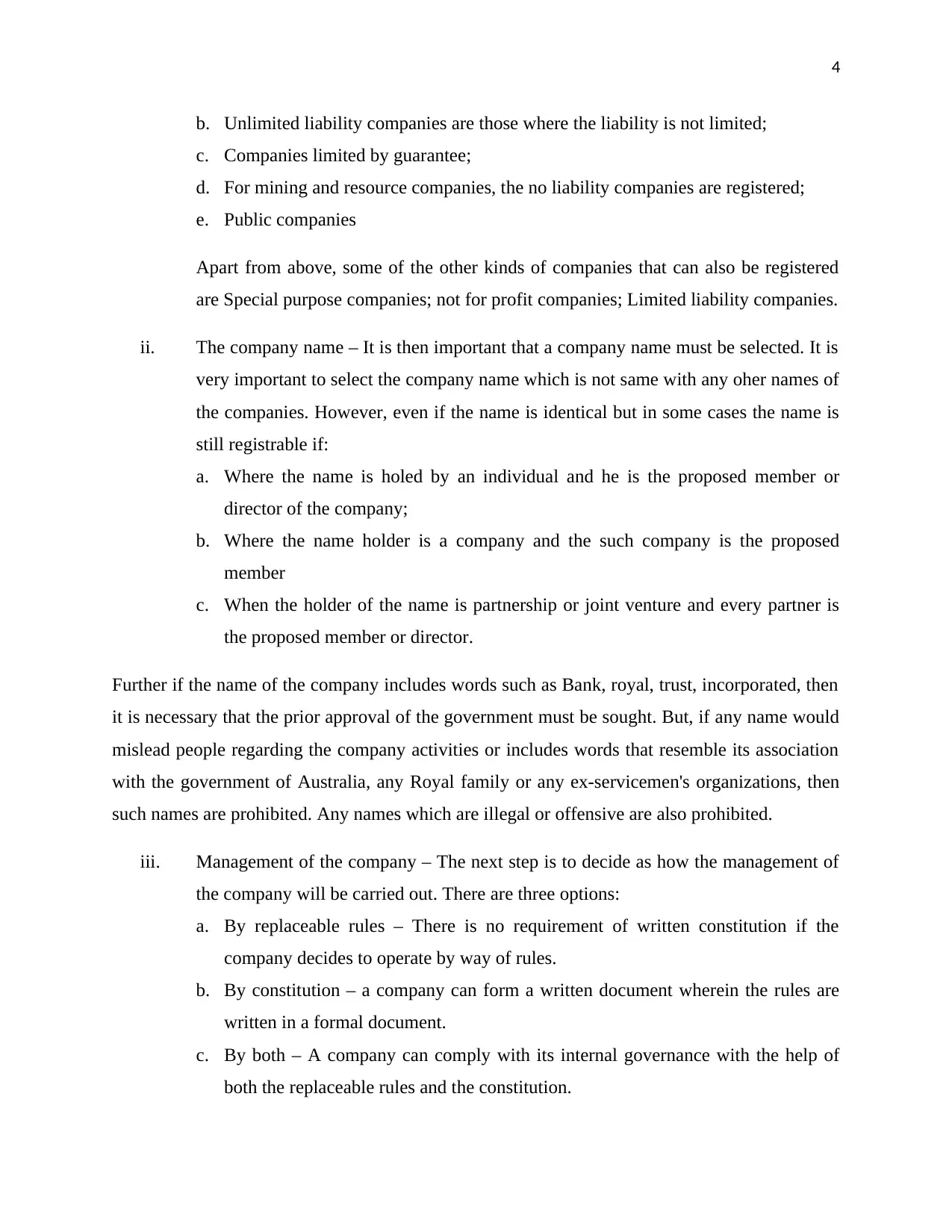
4
b. Unlimited liability companies are those where the liability is not limited;
c. Companies limited by guarantee;
d. For mining and resource companies, the no liability companies are registered;
e. Public companies
Apart from above, some of the other kinds of companies that can also be registered
are Special purpose companies; not for profit companies; Limited liability companies.
ii. The company name – It is then important that a company name must be selected. It is
very important to select the company name which is not same with any oher names of
the companies. However, even if the name is identical but in some cases the name is
still registrable if:
a. Where the name is holed by an individual and he is the proposed member or
director of the company;
b. Where the name holder is a company and the such company is the proposed
member
c. When the holder of the name is partnership or joint venture and every partner is
the proposed member or director.
Further if the name of the company includes words such as Bank, royal, trust, incorporated, then
it is necessary that the prior approval of the government must be sought. But, if any name would
mislead people regarding the company activities or includes words that resemble its association
with the government of Australia, any Royal family or any ex-servicemen's organizations, then
such names are prohibited. Any names which are illegal or offensive are also prohibited.
iii. Management of the company – The next step is to decide as how the management of
the company will be carried out. There are three options:
a. By replaceable rules – There is no requirement of written constitution if the
company decides to operate by way of rules.
b. By constitution – a company can form a written document wherein the rules are
written in a formal document.
c. By both – A company can comply with its internal governance with the help of
both the replaceable rules and the constitution.
b. Unlimited liability companies are those where the liability is not limited;
c. Companies limited by guarantee;
d. For mining and resource companies, the no liability companies are registered;
e. Public companies
Apart from above, some of the other kinds of companies that can also be registered
are Special purpose companies; not for profit companies; Limited liability companies.
ii. The company name – It is then important that a company name must be selected. It is
very important to select the company name which is not same with any oher names of
the companies. However, even if the name is identical but in some cases the name is
still registrable if:
a. Where the name is holed by an individual and he is the proposed member or
director of the company;
b. Where the name holder is a company and the such company is the proposed
member
c. When the holder of the name is partnership or joint venture and every partner is
the proposed member or director.
Further if the name of the company includes words such as Bank, royal, trust, incorporated, then
it is necessary that the prior approval of the government must be sought. But, if any name would
mislead people regarding the company activities or includes words that resemble its association
with the government of Australia, any Royal family or any ex-servicemen's organizations, then
such names are prohibited. Any names which are illegal or offensive are also prohibited.
iii. Management of the company – The next step is to decide as how the management of
the company will be carried out. There are three options:
a. By replaceable rules – There is no requirement of written constitution if the
company decides to operate by way of rules.
b. By constitution – a company can form a written document wherein the rules are
written in a formal document.
c. By both – A company can comply with its internal governance with the help of
both the replaceable rules and the constitution.
Paraphrase This Document
Need a fresh take? Get an instant paraphrase of this document with our AI Paraphraser
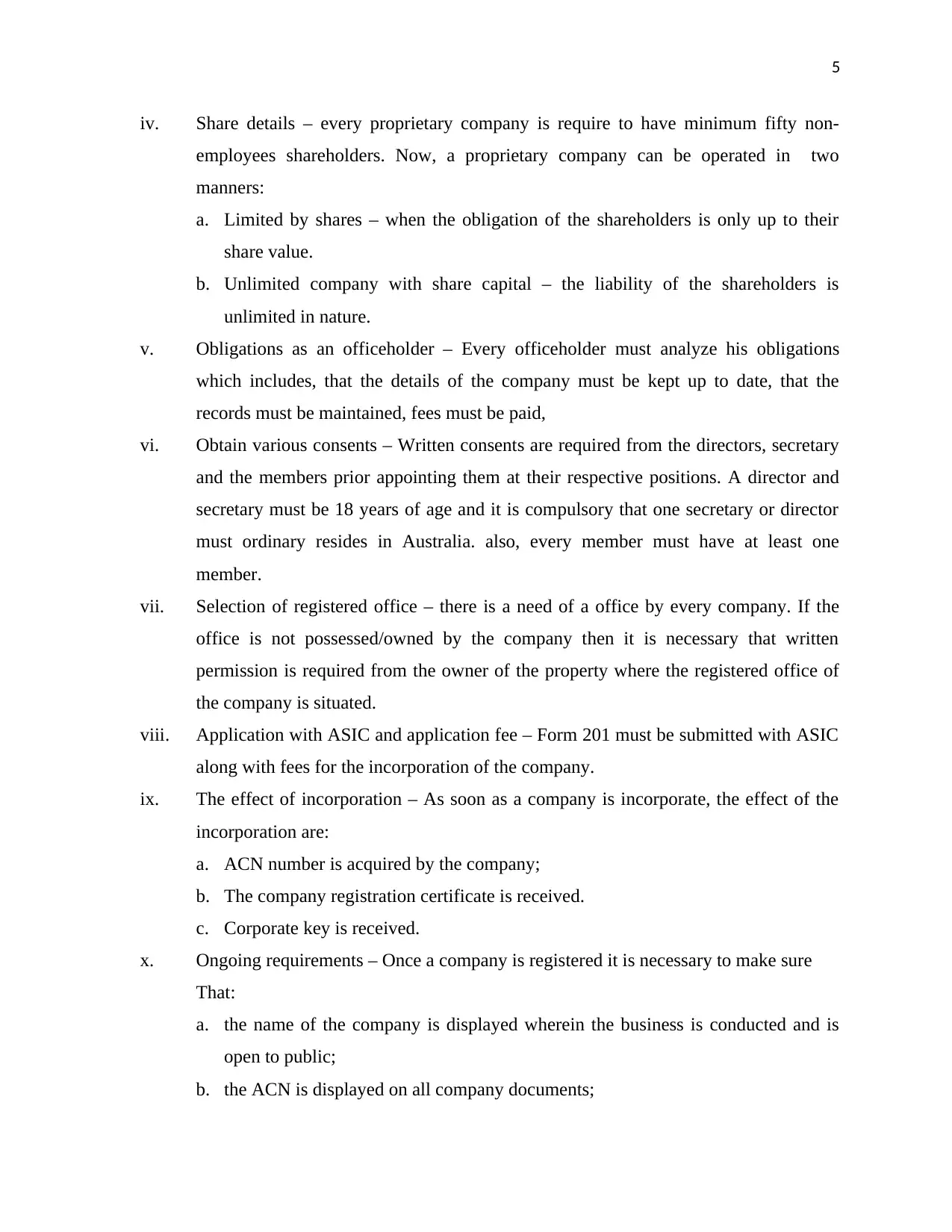
5
iv. Share details – every proprietary company is require to have minimum fifty non-
employees shareholders. Now, a proprietary company can be operated in two
manners:
a. Limited by shares – when the obligation of the shareholders is only up to their
share value.
b. Unlimited company with share capital – the liability of the shareholders is
unlimited in nature.
v. Obligations as an officeholder – Every officeholder must analyze his obligations
which includes, that the details of the company must be kept up to date, that the
records must be maintained, fees must be paid,
vi. Obtain various consents – Written consents are required from the directors, secretary
and the members prior appointing them at their respective positions. A director and
secretary must be 18 years of age and it is compulsory that one secretary or director
must ordinary resides in Australia. also, every member must have at least one
member.
vii. Selection of registered office – there is a need of a office by every company. If the
office is not possessed/owned by the company then it is necessary that written
permission is required from the owner of the property where the registered office of
the company is situated.
viii. Application with ASIC and application fee – Form 201 must be submitted with ASIC
along with fees for the incorporation of the company.
ix. The effect of incorporation – As soon as a company is incorporate, the effect of the
incorporation are:
a. ACN number is acquired by the company;
b. The company registration certificate is received.
c. Corporate key is received.
x. Ongoing requirements – Once a company is registered it is necessary to make sure
That:
a. the name of the company is displayed wherein the business is conducted and is
open to public;
b. the ACN is displayed on all company documents;
iv. Share details – every proprietary company is require to have minimum fifty non-
employees shareholders. Now, a proprietary company can be operated in two
manners:
a. Limited by shares – when the obligation of the shareholders is only up to their
share value.
b. Unlimited company with share capital – the liability of the shareholders is
unlimited in nature.
v. Obligations as an officeholder – Every officeholder must analyze his obligations
which includes, that the details of the company must be kept up to date, that the
records must be maintained, fees must be paid,
vi. Obtain various consents – Written consents are required from the directors, secretary
and the members prior appointing them at their respective positions. A director and
secretary must be 18 years of age and it is compulsory that one secretary or director
must ordinary resides in Australia. also, every member must have at least one
member.
vii. Selection of registered office – there is a need of a office by every company. If the
office is not possessed/owned by the company then it is necessary that written
permission is required from the owner of the property where the registered office of
the company is situated.
viii. Application with ASIC and application fee – Form 201 must be submitted with ASIC
along with fees for the incorporation of the company.
ix. The effect of incorporation – As soon as a company is incorporate, the effect of the
incorporation are:
a. ACN number is acquired by the company;
b. The company registration certificate is received.
c. Corporate key is received.
x. Ongoing requirements – Once a company is registered it is necessary to make sure
That:
a. the name of the company is displayed wherein the business is conducted and is
open to public;
b. the ACN is displayed on all company documents;
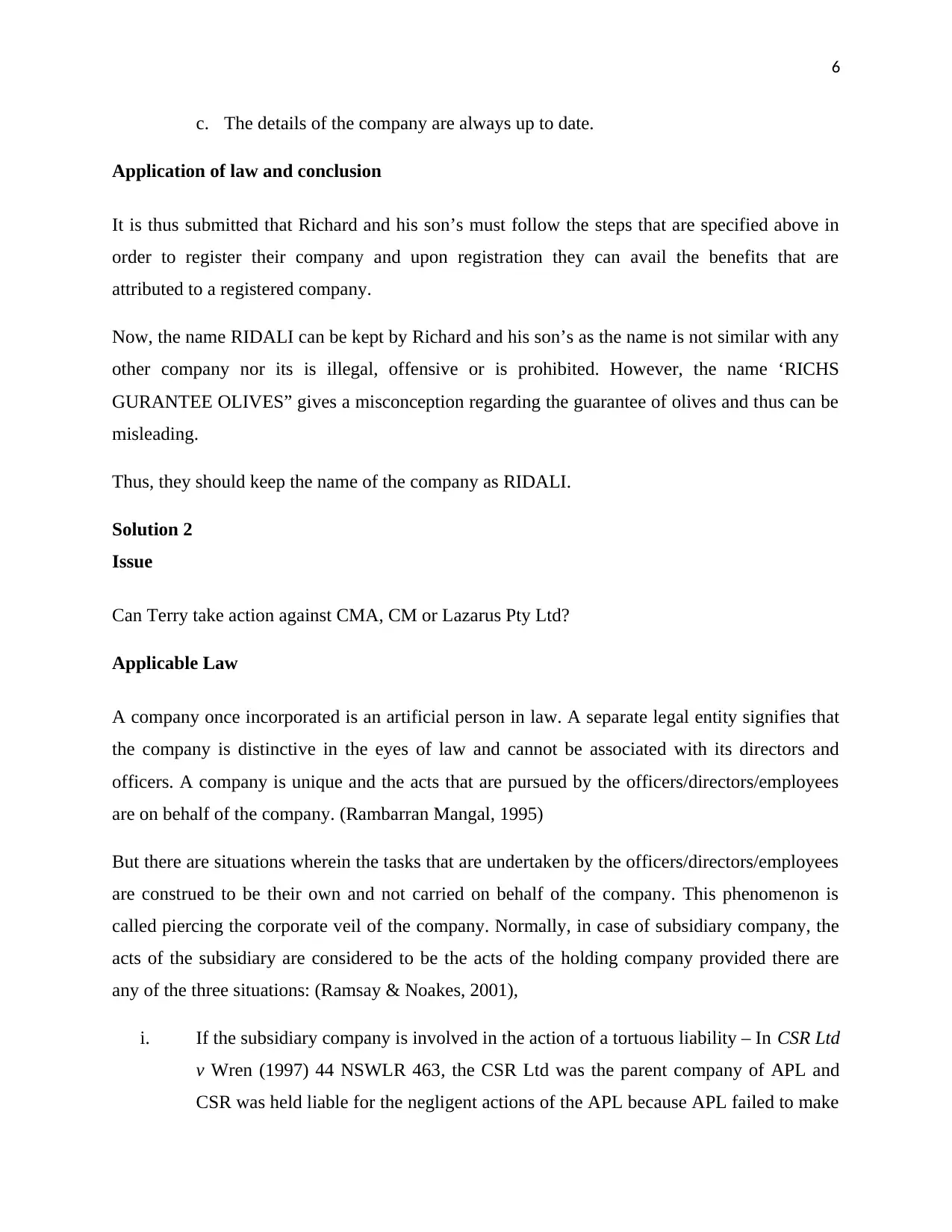
6
c. The details of the company are always up to date.
Application of law and conclusion
It is thus submitted that Richard and his son’s must follow the steps that are specified above in
order to register their company and upon registration they can avail the benefits that are
attributed to a registered company.
Now, the name RIDALI can be kept by Richard and his son’s as the name is not similar with any
other company nor its is illegal, offensive or is prohibited. However, the name ‘RICHS
GURANTEE OLIVES” gives a misconception regarding the guarantee of olives and thus can be
misleading.
Thus, they should keep the name of the company as RIDALI.
Solution 2
Issue
Can Terry take action against CMA, CM or Lazarus Pty Ltd?
Applicable Law
A company once incorporated is an artificial person in law. A separate legal entity signifies that
the company is distinctive in the eyes of law and cannot be associated with its directors and
officers. A company is unique and the acts that are pursued by the officers/directors/employees
are on behalf of the company. (Rambarran Mangal, 1995)
But there are situations wherein the tasks that are undertaken by the officers/directors/employees
are construed to be their own and not carried on behalf of the company. This phenomenon is
called piercing the corporate veil of the company. Normally, in case of subsidiary company, the
acts of the subsidiary are considered to be the acts of the holding company provided there are
any of the three situations: (Ramsay & Noakes, 2001),
i. If the subsidiary company is involved in the action of a tortuous liability – In CSR Ltd
v Wren (1997) 44 NSWLR 463, the CSR Ltd was the parent company of APL and
CSR was held liable for the negligent actions of the APL because APL failed to make
c. The details of the company are always up to date.
Application of law and conclusion
It is thus submitted that Richard and his son’s must follow the steps that are specified above in
order to register their company and upon registration they can avail the benefits that are
attributed to a registered company.
Now, the name RIDALI can be kept by Richard and his son’s as the name is not similar with any
other company nor its is illegal, offensive or is prohibited. However, the name ‘RICHS
GURANTEE OLIVES” gives a misconception regarding the guarantee of olives and thus can be
misleading.
Thus, they should keep the name of the company as RIDALI.
Solution 2
Issue
Can Terry take action against CMA, CM or Lazarus Pty Ltd?
Applicable Law
A company once incorporated is an artificial person in law. A separate legal entity signifies that
the company is distinctive in the eyes of law and cannot be associated with its directors and
officers. A company is unique and the acts that are pursued by the officers/directors/employees
are on behalf of the company. (Rambarran Mangal, 1995)
But there are situations wherein the tasks that are undertaken by the officers/directors/employees
are construed to be their own and not carried on behalf of the company. This phenomenon is
called piercing the corporate veil of the company. Normally, in case of subsidiary company, the
acts of the subsidiary are considered to be the acts of the holding company provided there are
any of the three situations: (Ramsay & Noakes, 2001),
i. If the subsidiary company is involved in the action of a tortuous liability – In CSR Ltd
v Wren (1997) 44 NSWLR 463, the CSR Ltd was the parent company of APL and
CSR was held liable for the negligent actions of the APL because APL failed to make
⊘ This is a preview!⊘
Do you want full access?
Subscribe today to unlock all pages.

Trusted by 1+ million students worldwide
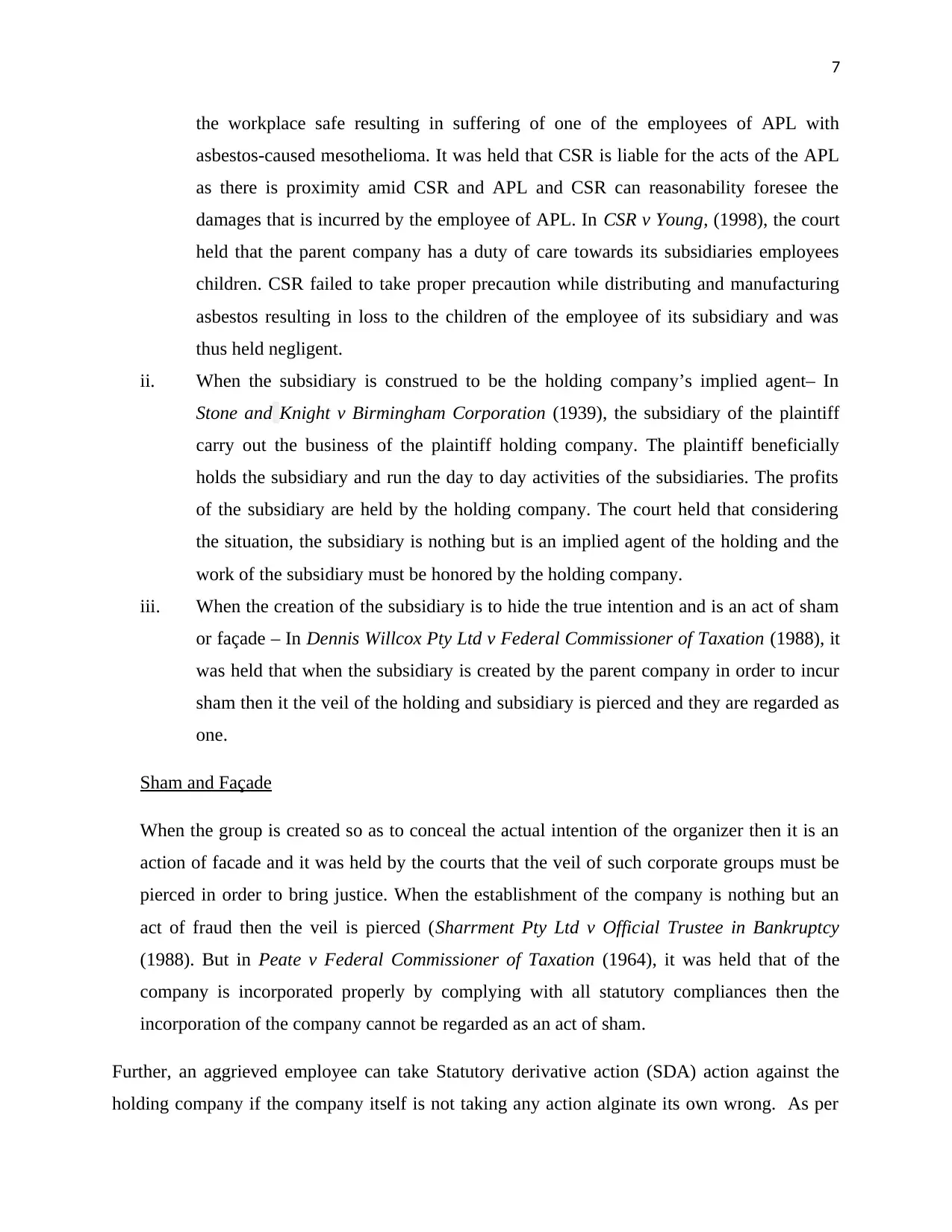
7
the workplace safe resulting in suffering of one of the employees of APL with
asbestos-caused mesothelioma. It was held that CSR is liable for the acts of the APL
as there is proximity amid CSR and APL and CSR can reasonability foresee the
damages that is incurred by the employee of APL. In CSR v Young, (1998), the court
held that the parent company has a duty of care towards its subsidiaries employees
children. CSR failed to take proper precaution while distributing and manufacturing
asbestos resulting in loss to the children of the employee of its subsidiary and was
thus held negligent.
ii. When the subsidiary is construed to be the holding company’s implied agent– In
Stone and Knight v Birmingham Corporation (1939), the subsidiary of the plaintiff
carry out the business of the plaintiff holding company. The plaintiff beneficially
holds the subsidiary and run the day to day activities of the subsidiaries. The profits
of the subsidiary are held by the holding company. The court held that considering
the situation, the subsidiary is nothing but is an implied agent of the holding and the
work of the subsidiary must be honored by the holding company.
iii. When the creation of the subsidiary is to hide the true intention and is an act of sham
or façade – In Dennis Willcox Pty Ltd v Federal Commissioner of Taxation (1988), it
was held that when the subsidiary is created by the parent company in order to incur
sham then it the veil of the holding and subsidiary is pierced and they are regarded as
one.
Sham and Façade
When the group is created so as to conceal the actual intention of the organizer then it is an
action of facade and it was held by the courts that the veil of such corporate groups must be
pierced in order to bring justice. When the establishment of the company is nothing but an
act of fraud then the veil is pierced (Sharrment Pty Ltd v Official Trustee in Bankruptcy
(1988). But in Peate v Federal Commissioner of Taxation (1964), it was held that of the
company is incorporated properly by complying with all statutory compliances then the
incorporation of the company cannot be regarded as an act of sham.
Further, an aggrieved employee can take Statutory derivative action (SDA) action against the
holding company if the company itself is not taking any action alginate its own wrong. As per
the workplace safe resulting in suffering of one of the employees of APL with
asbestos-caused mesothelioma. It was held that CSR is liable for the acts of the APL
as there is proximity amid CSR and APL and CSR can reasonability foresee the
damages that is incurred by the employee of APL. In CSR v Young, (1998), the court
held that the parent company has a duty of care towards its subsidiaries employees
children. CSR failed to take proper precaution while distributing and manufacturing
asbestos resulting in loss to the children of the employee of its subsidiary and was
thus held negligent.
ii. When the subsidiary is construed to be the holding company’s implied agent– In
Stone and Knight v Birmingham Corporation (1939), the subsidiary of the plaintiff
carry out the business of the plaintiff holding company. The plaintiff beneficially
holds the subsidiary and run the day to day activities of the subsidiaries. The profits
of the subsidiary are held by the holding company. The court held that considering
the situation, the subsidiary is nothing but is an implied agent of the holding and the
work of the subsidiary must be honored by the holding company.
iii. When the creation of the subsidiary is to hide the true intention and is an act of sham
or façade – In Dennis Willcox Pty Ltd v Federal Commissioner of Taxation (1988), it
was held that when the subsidiary is created by the parent company in order to incur
sham then it the veil of the holding and subsidiary is pierced and they are regarded as
one.
Sham and Façade
When the group is created so as to conceal the actual intention of the organizer then it is an
action of facade and it was held by the courts that the veil of such corporate groups must be
pierced in order to bring justice. When the establishment of the company is nothing but an
act of fraud then the veil is pierced (Sharrment Pty Ltd v Official Trustee in Bankruptcy
(1988). But in Peate v Federal Commissioner of Taxation (1964), it was held that of the
company is incorporated properly by complying with all statutory compliances then the
incorporation of the company cannot be regarded as an act of sham.
Further, an aggrieved employee can take Statutory derivative action (SDA) action against the
holding company if the company itself is not taking any action alginate its own wrong. As per
Paraphrase This Document
Need a fresh take? Get an instant paraphrase of this document with our AI Paraphraser
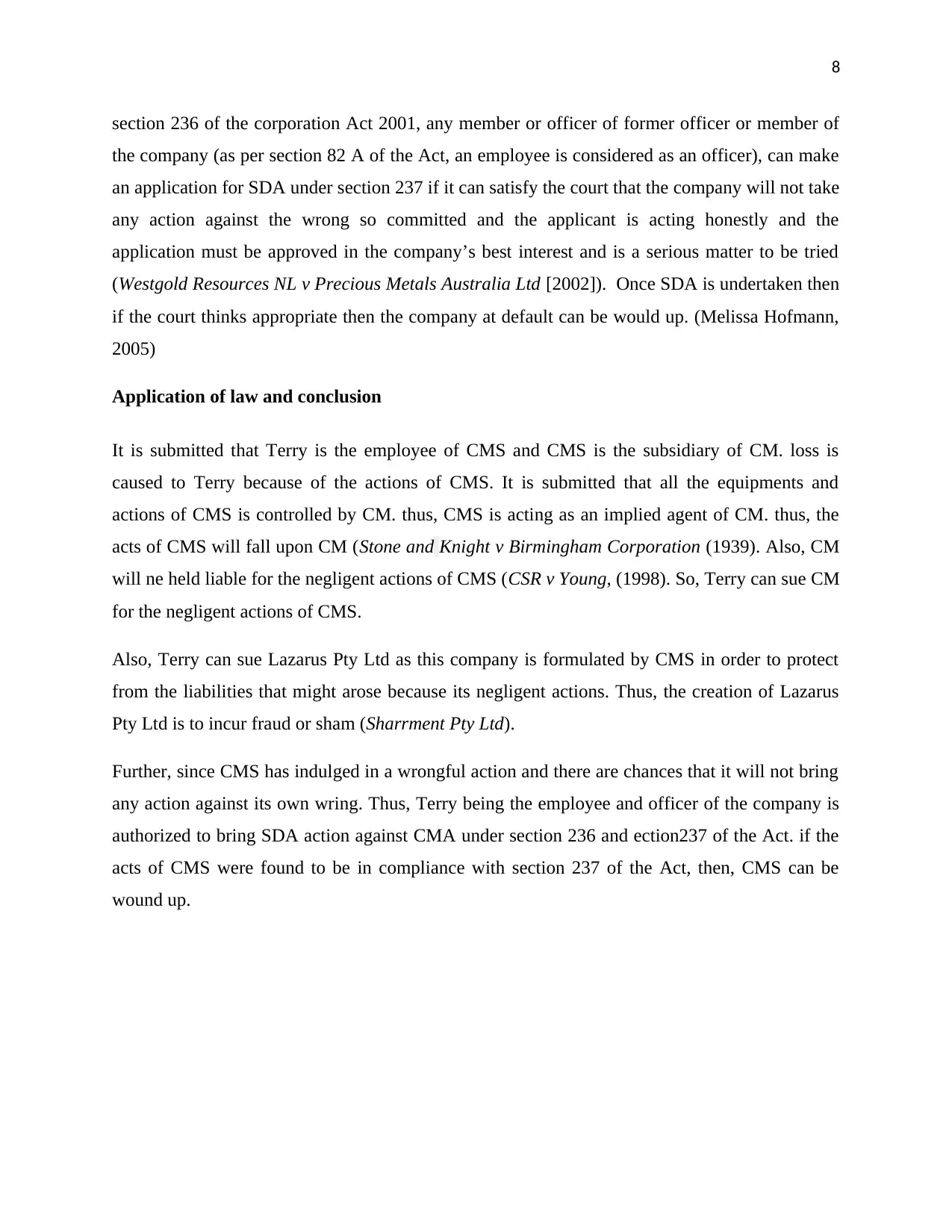
8
section 236 of the corporation Act 2001, any member or officer of former officer or member of
the company (as per section 82 A of the Act, an employee is considered as an officer), can make
an application for SDA under section 237 if it can satisfy the court that the company will not take
any action against the wrong so committed and the applicant is acting honestly and the
application must be approved in the company’s best interest and is a serious matter to be tried
(Westgold Resources NL v Precious Metals Australia Ltd [2002]). Once SDA is undertaken then
if the court thinks appropriate then the company at default can be would up. (Melissa Hofmann,
2005)
Application of law and conclusion
It is submitted that Terry is the employee of CMS and CMS is the subsidiary of CM. loss is
caused to Terry because of the actions of CMS. It is submitted that all the equipments and
actions of CMS is controlled by CM. thus, CMS is acting as an implied agent of CM. thus, the
acts of CMS will fall upon CM (Stone and Knight v Birmingham Corporation (1939). Also, CM
will ne held liable for the negligent actions of CMS (CSR v Young, (1998). So, Terry can sue CM
for the negligent actions of CMS.
Also, Terry can sue Lazarus Pty Ltd as this company is formulated by CMS in order to protect
from the liabilities that might arose because its negligent actions. Thus, the creation of Lazarus
Pty Ltd is to incur fraud or sham (Sharrment Pty Ltd).
Further, since CMS has indulged in a wrongful action and there are chances that it will not bring
any action against its own wring. Thus, Terry being the employee and officer of the company is
authorized to bring SDA action against CMA under section 236 and ection237 of the Act. if the
acts of CMS were found to be in compliance with section 237 of the Act, then, CMS can be
wound up.
section 236 of the corporation Act 2001, any member or officer of former officer or member of
the company (as per section 82 A of the Act, an employee is considered as an officer), can make
an application for SDA under section 237 if it can satisfy the court that the company will not take
any action against the wrong so committed and the applicant is acting honestly and the
application must be approved in the company’s best interest and is a serious matter to be tried
(Westgold Resources NL v Precious Metals Australia Ltd [2002]). Once SDA is undertaken then
if the court thinks appropriate then the company at default can be would up. (Melissa Hofmann,
2005)
Application of law and conclusion
It is submitted that Terry is the employee of CMS and CMS is the subsidiary of CM. loss is
caused to Terry because of the actions of CMS. It is submitted that all the equipments and
actions of CMS is controlled by CM. thus, CMS is acting as an implied agent of CM. thus, the
acts of CMS will fall upon CM (Stone and Knight v Birmingham Corporation (1939). Also, CM
will ne held liable for the negligent actions of CMS (CSR v Young, (1998). So, Terry can sue CM
for the negligent actions of CMS.
Also, Terry can sue Lazarus Pty Ltd as this company is formulated by CMS in order to protect
from the liabilities that might arose because its negligent actions. Thus, the creation of Lazarus
Pty Ltd is to incur fraud or sham (Sharrment Pty Ltd).
Further, since CMS has indulged in a wrongful action and there are chances that it will not bring
any action against its own wring. Thus, Terry being the employee and officer of the company is
authorized to bring SDA action against CMA under section 236 and ection237 of the Act. if the
acts of CMS were found to be in compliance with section 237 of the Act, then, CMS can be
wound up.
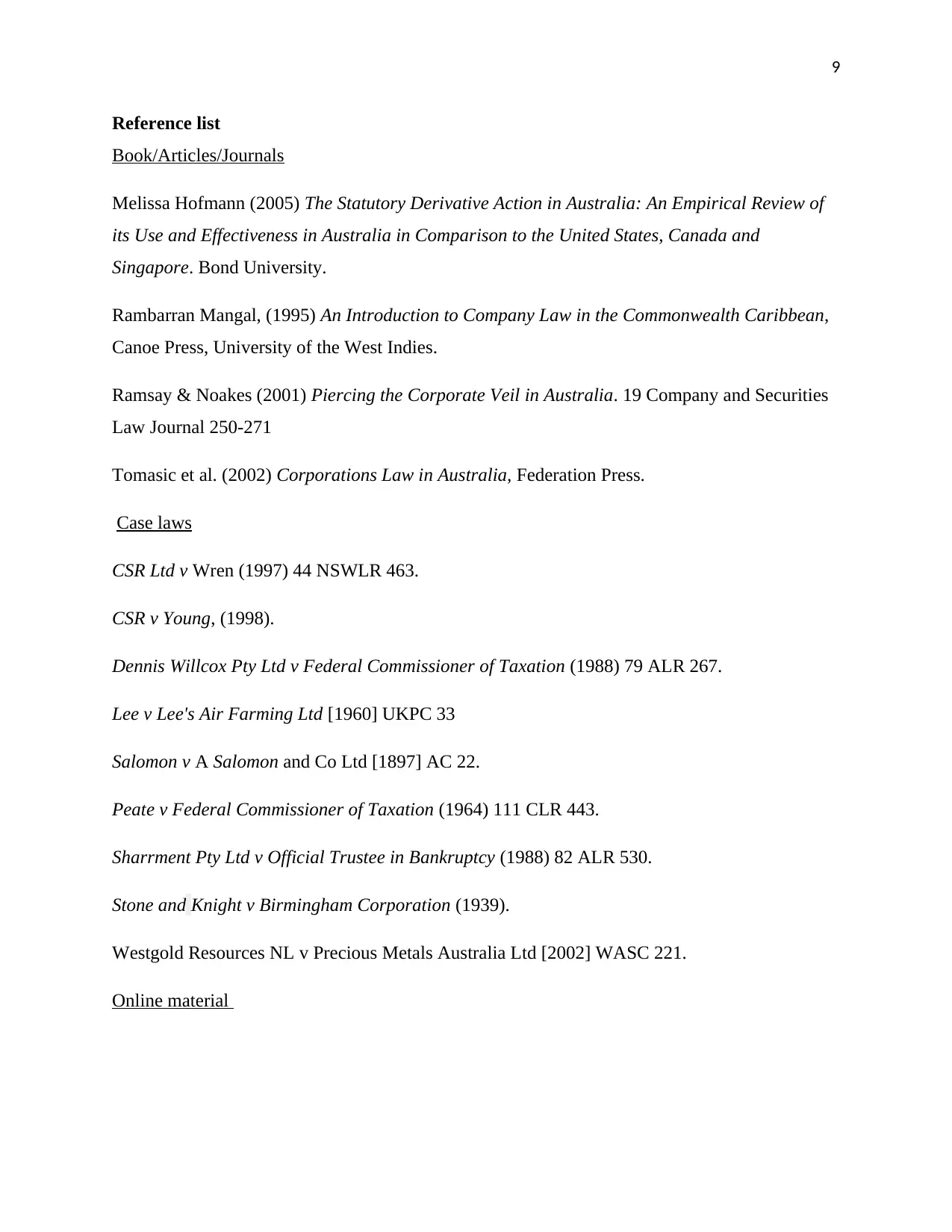
9
Reference list
Book/Articles/Journals
Melissa Hofmann (2005) The Statutory Derivative Action in Australia: An Empirical Review of
its Use and Effectiveness in Australia in Comparison to the United States, Canada and
Singapore. Bond University.
Rambarran Mangal, (1995) An Introduction to Company Law in the Commonwealth Caribbean,
Canoe Press, University of the West Indies.
Ramsay & Noakes (2001) Piercing the Corporate Veil in Australia. 19 Company and Securities
Law Journal 250-271
Tomasic et al. (2002) Corporations Law in Australia, Federation Press.
Case laws
CSR Ltd v Wren (1997) 44 NSWLR 463.
CSR v Young, (1998).
Dennis Willcox Pty Ltd v Federal Commissioner of Taxation (1988) 79 ALR 267.
Lee v Lee's Air Farming Ltd [1960] UKPC 33
Salomon v A Salomon and Co Ltd [1897] AC 22.
Peate v Federal Commissioner of Taxation (1964) 111 CLR 443.
Sharrment Pty Ltd v Official Trustee in Bankruptcy (1988) 82 ALR 530.
Stone and Knight v Birmingham Corporation (1939).
Westgold Resources NL v Precious Metals Australia Ltd [2002] WASC 221.
Online material
Reference list
Book/Articles/Journals
Melissa Hofmann (2005) The Statutory Derivative Action in Australia: An Empirical Review of
its Use and Effectiveness in Australia in Comparison to the United States, Canada and
Singapore. Bond University.
Rambarran Mangal, (1995) An Introduction to Company Law in the Commonwealth Caribbean,
Canoe Press, University of the West Indies.
Ramsay & Noakes (2001) Piercing the Corporate Veil in Australia. 19 Company and Securities
Law Journal 250-271
Tomasic et al. (2002) Corporations Law in Australia, Federation Press.
Case laws
CSR Ltd v Wren (1997) 44 NSWLR 463.
CSR v Young, (1998).
Dennis Willcox Pty Ltd v Federal Commissioner of Taxation (1988) 79 ALR 267.
Lee v Lee's Air Farming Ltd [1960] UKPC 33
Salomon v A Salomon and Co Ltd [1897] AC 22.
Peate v Federal Commissioner of Taxation (1964) 111 CLR 443.
Sharrment Pty Ltd v Official Trustee in Bankruptcy (1988) 82 ALR 530.
Stone and Knight v Birmingham Corporation (1939).
Westgold Resources NL v Precious Metals Australia Ltd [2002] WASC 221.
Online material
⊘ This is a preview!⊘
Do you want full access?
Subscribe today to unlock all pages.

Trusted by 1+ million students worldwide
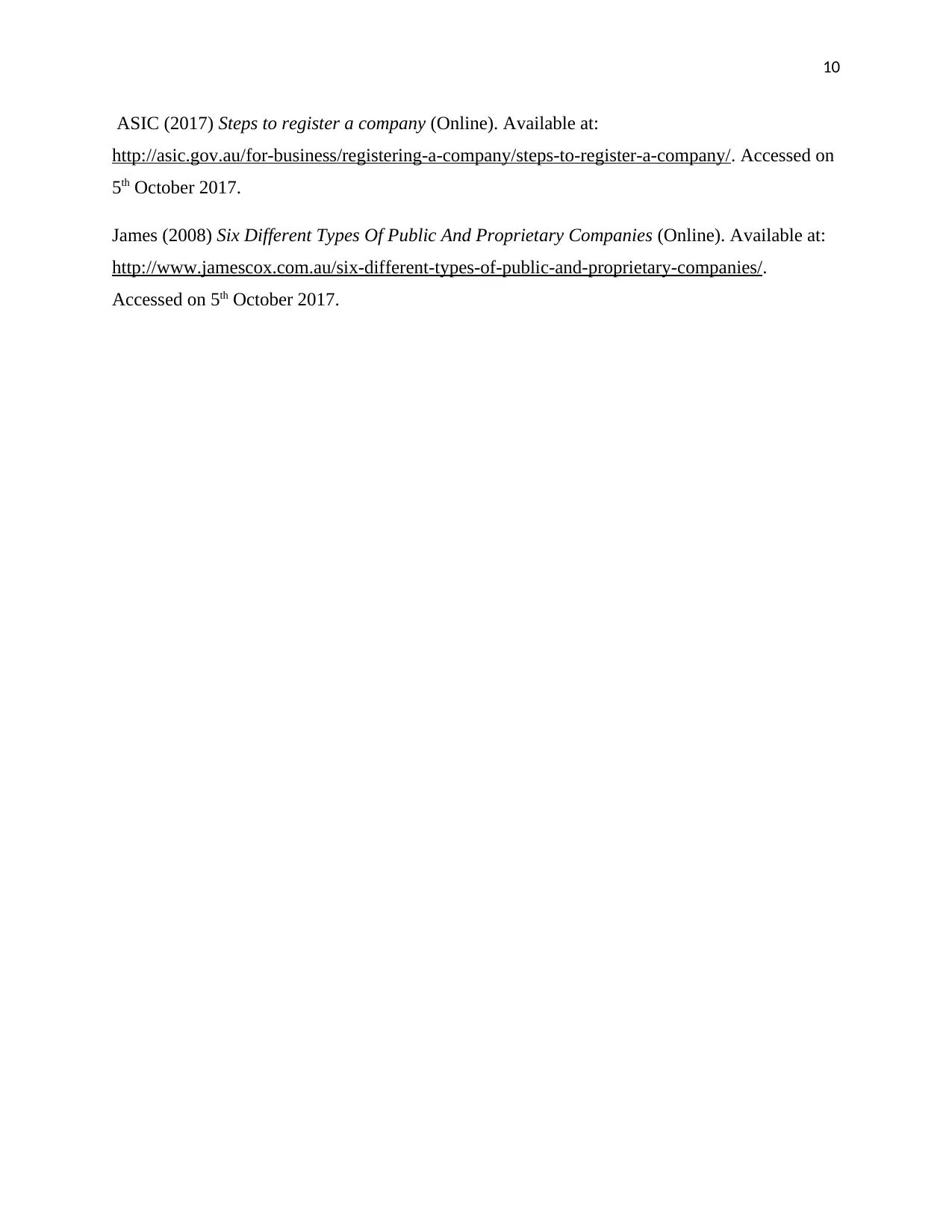
10
ASIC (2017) Steps to register a company (Online). Available at:
http://asic.gov.au/for-business/registering-a-company/steps-to-register-a-company/. Accessed on
5th October 2017.
James (2008) Six Different Types Of Public And Proprietary Companies (Online). Available at:
http://www.jamescox.com.au/six-different-types-of-public-and-proprietary-companies/.
Accessed on 5th October 2017.
ASIC (2017) Steps to register a company (Online). Available at:
http://asic.gov.au/for-business/registering-a-company/steps-to-register-a-company/. Accessed on
5th October 2017.
James (2008) Six Different Types Of Public And Proprietary Companies (Online). Available at:
http://www.jamescox.com.au/six-different-types-of-public-and-proprietary-companies/.
Accessed on 5th October 2017.
1 out of 10
Related Documents
Your All-in-One AI-Powered Toolkit for Academic Success.
+13062052269
info@desklib.com
Available 24*7 on WhatsApp / Email
![[object Object]](/_next/static/media/star-bottom.7253800d.svg)
Unlock your academic potential
Copyright © 2020–2025 A2Z Services. All Rights Reserved. Developed and managed by ZUCOL.





